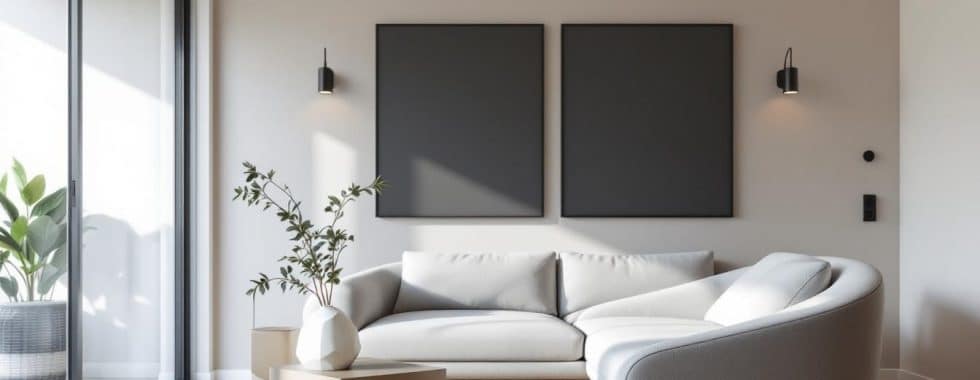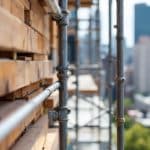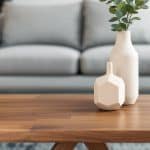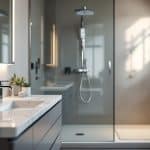Modern Home Designs Melbourne Homeowners Love
Melbourne’s architectural landscape is shifting toward sleek, contemporary aesthetics that blend functionality with style. Modern home designs Melbourne residents choose today prioritise open spaces, sustainable materials, and smart technology integration.
We at Cameron Construction see growing demand for renovations that transform traditional homes into modern living spaces. These updates not only improve daily comfort but also significantly boost property values across Melbourne’s competitive real estate market.
What Design Trends Are Transforming Melbourne Homes
Open-plan layouts dominate Melbourne renovations, creating seamless kitchen-dining-living combinations that homeowners increasingly prefer. These designs work particularly well in Melbourne’s narrow terrace homes and post-war bungalows, where wall removal between kitchen and living areas increases usable space by up to 40%. Double-height voids and strategically placed skylights amplify this effect, making compact homes feel significantly larger. Corner windows eliminate visual barriers entirely and create seamless transitions to outdoor entertaining areas that extend living space year-round.
Energy Efficiency Drives Material Choices
The July 2024 ban on engineered stone has accelerated Melbourne’s shift toward sustainable surfaces like recycled timber benchtops, natural marble, and concrete alternatives. While solar installations have seen fluctuations, with recent data showing a decline from 2020 peaks, double-glazed windows now appear in 85% of premium renovations.
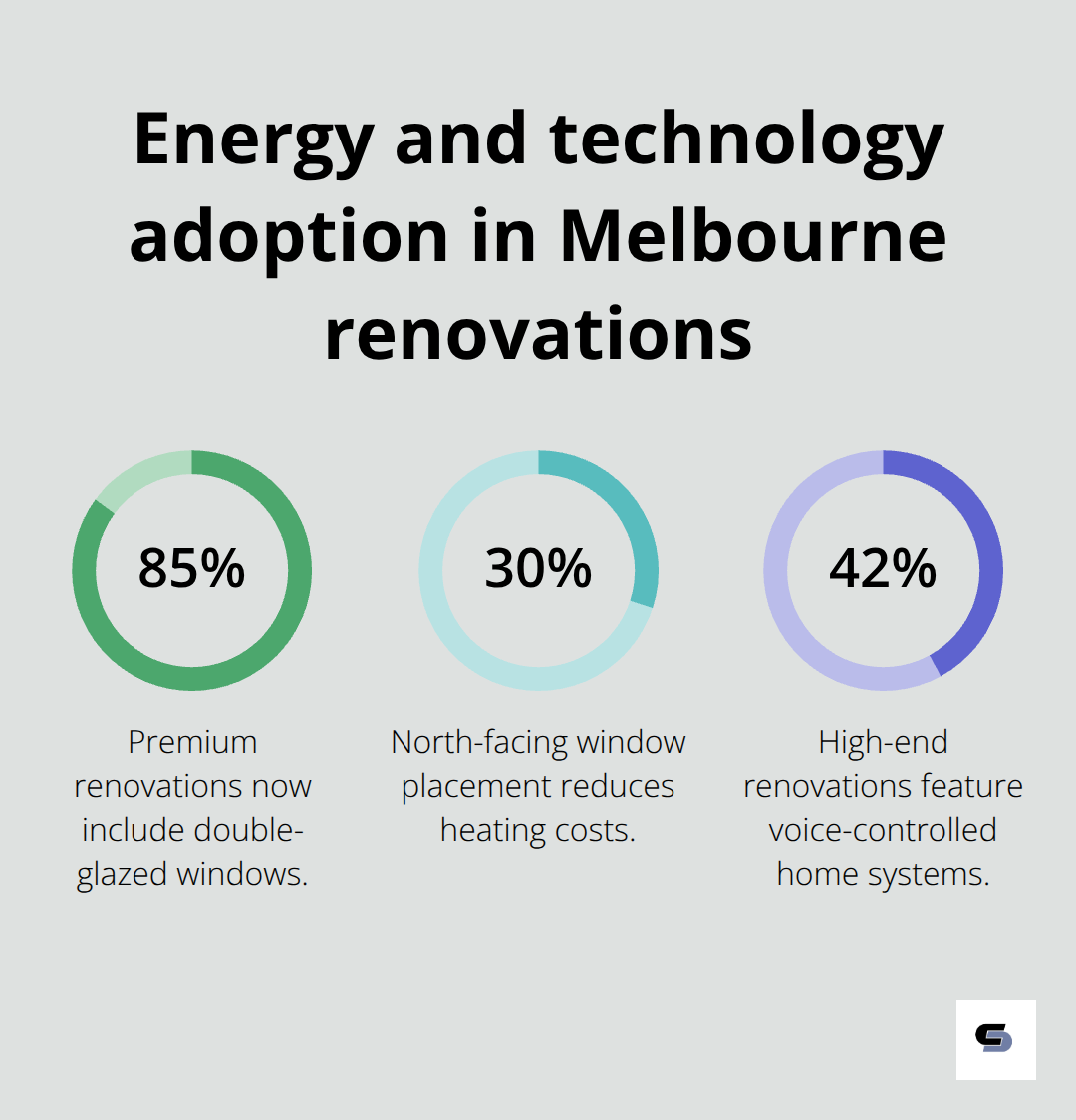
North-facing window placement reduces heating costs by 30% through passive solar gain (making this orientation a priority for extensions and new builds). Smart thermostats and automated LED systems typically pay for themselves within three years through reduced energy bills.
Technology Integration Becomes Standard
Voice-controlled home systems now manage lighting, blinds, and climate control in 42% of Melbourne’s high-end renovations. Programmable smart switches allow different lighting scenes throughout the day, while automated security systems integrate with smartphone apps for remote monitoring. Built-in USB charging stations in kitchen islands and bedside tables eliminate cord clutter, while concealed cable management systems keep technology invisible yet accessible.
These modern features work together to create homes that adapt to daily routines and seasonal changes. The next consideration involves understanding how architectural elements support these contemporary lifestyle preferences.
What Makes Modern Architecture Stand Out
Melbourne’s modern architecture relies on geometric precision and uncluttered surfaces that create visual calm in busy urban environments. Homeowners choose flat or low-pitched rooflines, horizontal window arrangements, and materials like concrete render combined with timber screens. These design decisions reduce visual noise while they maintain street presence.
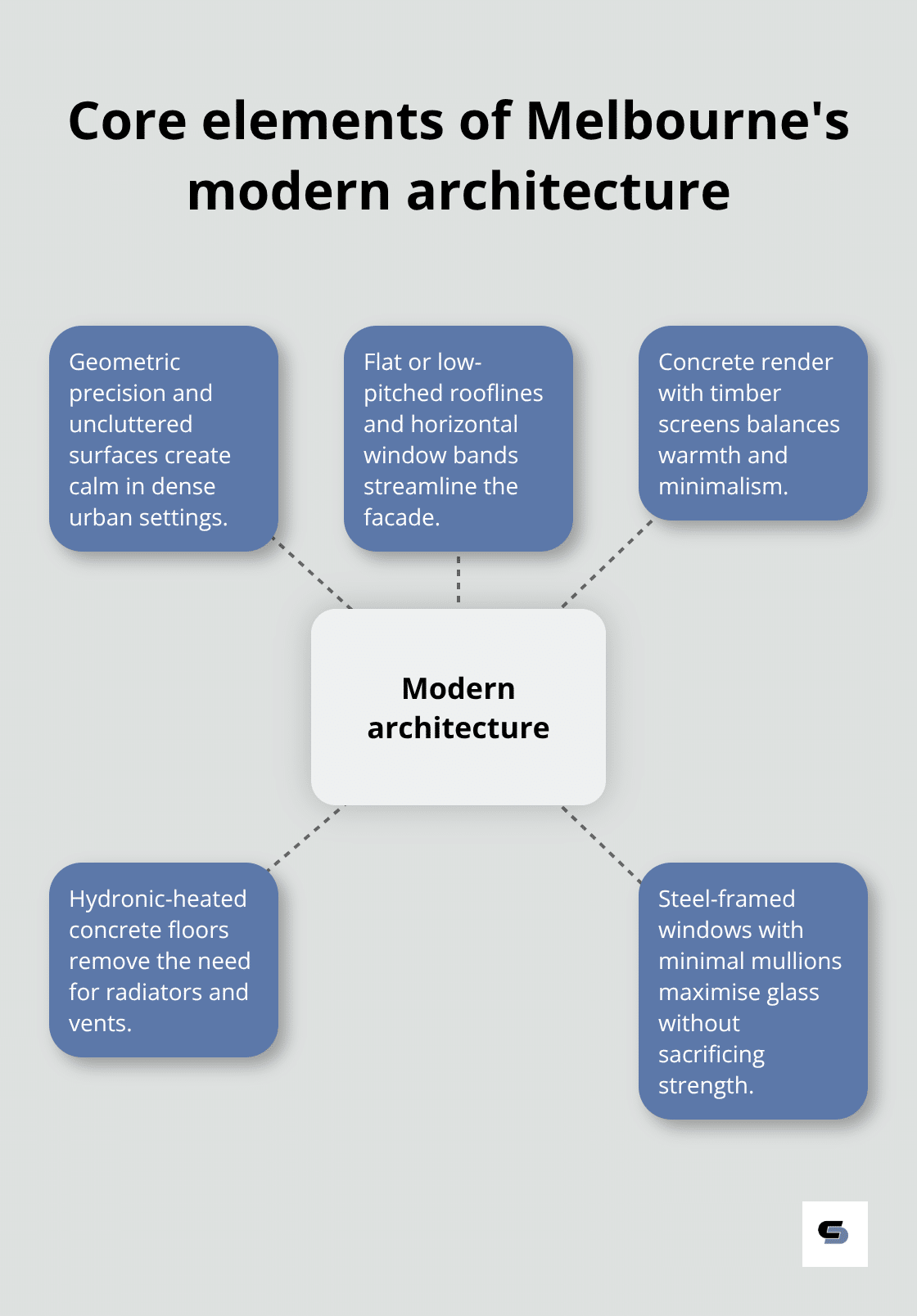
Concrete floors with hydronic heating eliminate the need for radiators or vents, which creates seamless wall surfaces. Steel-framed windows with minimal mullions maximise glass area while they maintain structural integrity. The mid-century modern revival has driven a 340% increase in searches for walnut timber finishes, which proves that warm materials balance stark geometries effectively.
Windows Drive Natural Light Strategy
Floor-to-ceiling windows transform Melbourne homes when they capture northern light throughout winter months. Corner windows eliminate visual boundaries between indoor and outdoor spaces, which makes rooms appear larger than their actual footprint.
Clerestory windows above kitchen islands provide task light without they compromise privacy, while horizontal window strips create dramatic shadow patterns that change throughout the day. Double-height voids with strategically placed skylights distribute natural light to lower levels (which reduces electricity consumption during daylight hours). Smart glass technology now allows windows to tint automatically based on sun intensity, which maintains comfort without curtains or blinds.
Flexible Rooms Adapt to Daily Life
Multi-functional spaces respond to Melbourne’s housing affordability challenges when they maximise every square metre. Sliding cavity doors convert open areas into private work zones within seconds, while murphy beds transform home offices into guest bedrooms overnight.
Kitchen islands with built-in surfaces eliminate the need for separate rooms in compact homes. Modular storage systems adapt to family needs, with adjustable shelves and hidden compartments that maintain clean sight lines. These design strategies allow families to use spaces differently throughout the day without they compromise the minimalist aesthetic.
Material Choices Define Character
Natural timber adds warmth to concrete and steel frameworks, while exposed brick walls provide texture against smooth rendered surfaces. Terrazzo floors make a comeback in contemporary Melbourne homes (offering durability with visual interest through aggregate patterns). Stone feature walls anchor open-plan spaces and create focal points without they interrupt flow.
These architectural elements work together to support the practical considerations that homeowners face when they plan modern renovations.
How Much Should You Budget for Modern Renovations
Modern renovation costs in Melbourne range from $750,000 to $1.5 million for comprehensive transformations, with premium projects that exceed $2 million when structural changes occur. Open-plan conversions typically cost $45,000 to $85,000 per wall removal (structural work and finishes included).
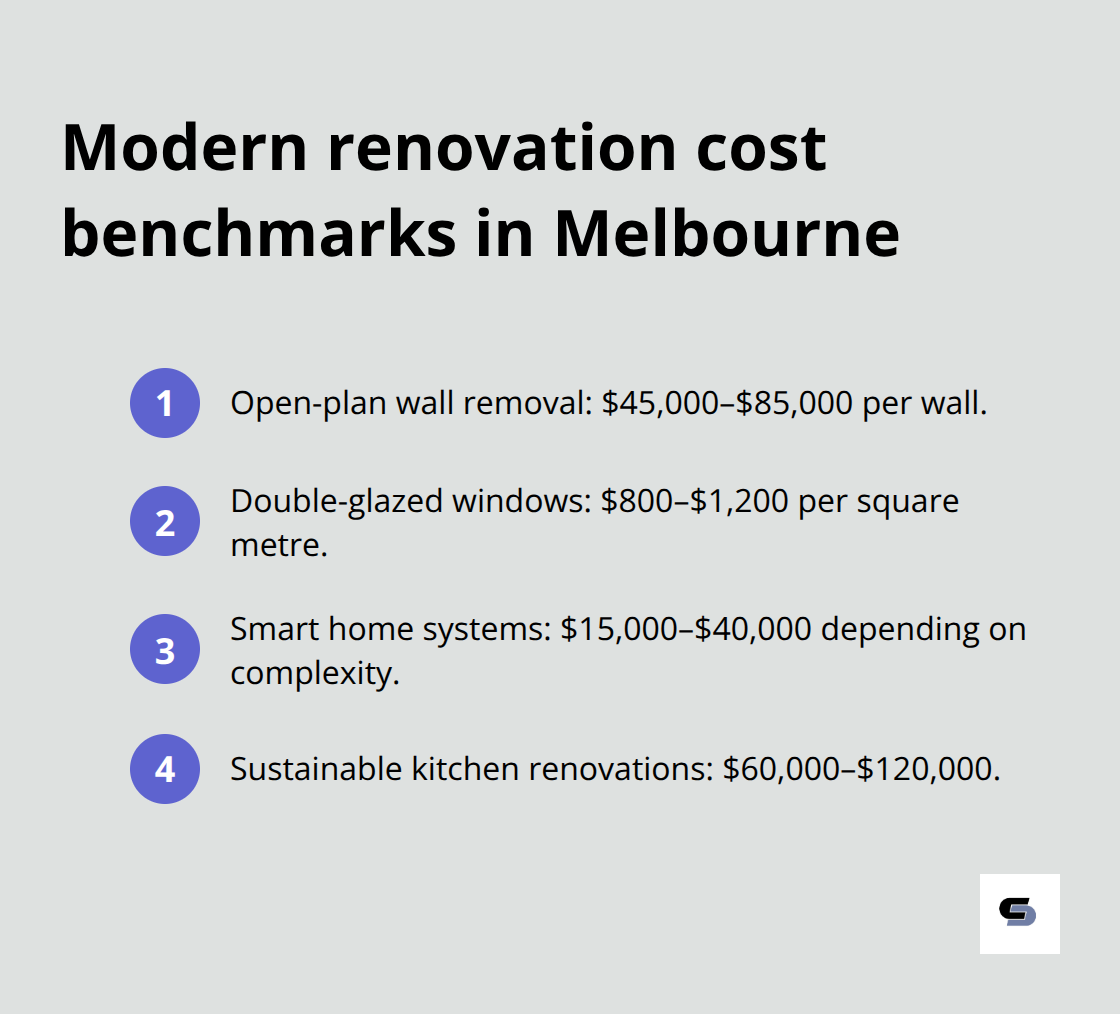
Double-glazed window installations average $800 to $1,200 per square metre, while smart home systems add $15,000 to $40,000 based on automation complexity. Kitchen renovations with sustainable materials like recycled timber benchtops and induction cooktops range from $60,000 to $120,000, costs that exceed traditional options but remain essential for modern appeal.
Energy Upgrades Deliver Strong Returns
Energy-efficient upgrades provide the strongest financial returns, with mid-range renovations delivering an estimated 57% return on investment through increased property values. Solar panel systems typically break even within 6-8 years through reduced electricity bills, while smart thermostats pay for themselves within 3 years. North-facing extensions command premium prices when sold, often return 85-90% of construction costs in Melbourne’s eastern suburbs.
Multi-Functional Spaces Boost Market Appeal
Multi-functional spaces increase property appeal dramatically, with homes that feature flexible layouts sell 15-20% faster than traditional floor plans. Open-plan areas with moveable partitions attract buyers who value adaptability. Home offices that convert to guest bedrooms add significant value in Melbourne’s competitive market.
Finance Options Support Major Updates
Construction loans through major banks offer competitive rates that start at 6.2% for renovation projects over $50,000, while personal loans suit smaller updates under $30,000. Government rebates for energy-efficient appliances help reduce upgrade costs, which makes sustainable choices more accessible for homeowners who plan contemporary transformations. Financing options help maximise your renovation’s return on investment.
Final Thoughts
Modern home designs Melbourne homeowners select today provide measurable benefits that extend beyond visual appeal. Open-plan layouts boost usable space by 40% while energy-efficient features cut utility costs by 30% through smart window placement and technology integration. These contemporary updates return 57% of investment costs through higher property values, with homes that feature flexible layouts selling 15-20% faster than traditional designs.
The lifestyle improvements prove equally valuable. Multi-functional spaces adapt to daily routines while automated systems control lighting and climate seamlessly. Natural light maximisation through floor-to-ceiling windows and clerestory installations creates healthier environments that support Melbourne’s indoor-outdoor lifestyle preferences.
Professional expertise helps navigate structural changes, material selections, and technology integration effectively. We at Cameron Construction combine quality craftsmanship with transparent communication throughout every project phase (working with experienced designers, engineers, and interior advisers to align renovations with your vision). Ready to transform your home with modern design elements? Contact Cameron Construction today to discuss how contemporary updates can enhance your Melbourne property’s comfort, efficiency, and market appeal.

